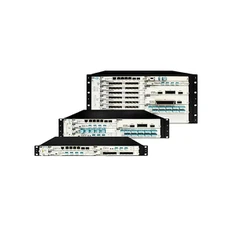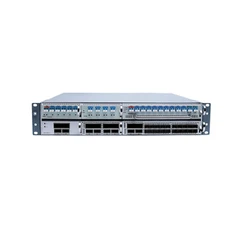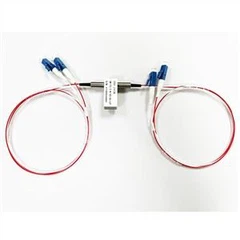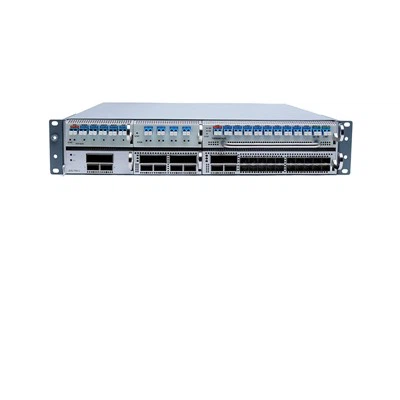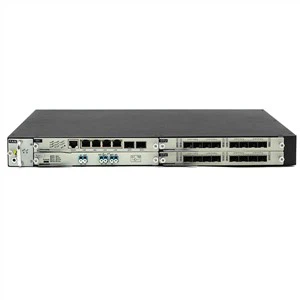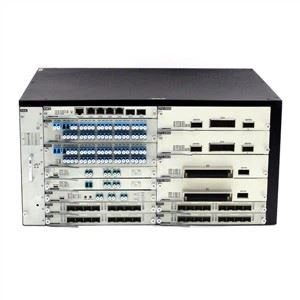The international Cabling Standard ISO / IEC 11801 divides single-mode fiber into two types: OS1 and OS2. They have different characteristics and application environment, and can not be interconnected, otherwise it will lead to weak transmission signal and other problems.
Optical fiber can be divided into single mode and multi-mode according to its transmission mode. International Cabling Standard ISO / IEC 11801 divides multimode fiber into three types: om1, om2 and OM3. Om1 refers to the traditional 62.5 μ m multimode fiber; om2 refers to the traditional 50 μ m multimode fiber; OM3 refers to the new 50 μ m 10 Gigabit multimode fiber; the single-mode fiber is divided into two types: OS1 and OS2. OS1 refers to the optical fiber that meets the optical fiber standards of g.652a and g.652b, namely the traditional single-mode optical fiber; OS2 refers to the optical fiber that meets the optical fiber standards of g.652c and g.652d, also known as single-mode zero water peak optical fiber or single-mode low water peak optical fiber. With the development of optical fiber technology, OS1 will be gradually replaced by OS2. However, OS1 and OS2 are not distinguished in the published Ethernet technical standards. It is expected that OS2 single-mode fiber can be better used in the next generation Ethernet standards.
OS1 single-mode fiber is mainly used in o-band: 1320nm-1360nm and C-band: 1530-1560nm. Due to overcoming the water peak effect of 1383nm, the applicable bands of OS2 single-mode fiber are expanded to four, namely, o-band: 1323nm-1360nm, E-band: 1360nm-1460nm, S-band: 1460nm-1530nm and C-band: 1530nm-1560nm. The L-band: 1650nm-1675nm and U-Band: 1625-1675nm are not defined in the standard OS2 fiber
What is the difference between OS1 and OS2 single mode fibers?
1.standard
OS1 single-mode optical fiber jumper meets ITU-T G.652 standard, including ITU-T G.652. A and ITU-T g.652b standard (conventional), ITU-T g.652c and g.652d standard (low water peak). However, OS2 single-mode fiber refers to the fiber that meets the optical fiber standard g.652c or g.652d, also known as single-mode zero water peak fiber or single-mode low water peak fiber. These low water peak fibers are usually used in CWDM (coarse wavelength division multiplexing) applications. In addition, the new Cabling Standard g.657.a1 is released for bend insensitive single-mode fiber jumpers to optimize the cost performance of optical fiber products. Nowadays, OS2 single-mode fiber conforming to this standard is also available in the market.
2.Cable structure
The OS1 single-mode fiber usually adopts tight sleeve structure and is specially designed for indoor application. It usually has a protective cover on the outside and a bundle of flexible fiber polymer (such as aramid yarn) wrapped in the middle. The core and cladding of OS1 single-mode fiber are made of glass, which cannot be bent and fragile. The coating can protect the fiber and prolong its service life. OS2 single mode fiber is usually designed with loose tube, which is more suitable for outdoor application. When deployed in some extreme environments, more robust cable construction is required. The OS2 single-mode fiber is helically placed in a semi-rigid tube, so the OS2 can be extended without bending the inner fiber, so that the fiber will not be damaged under huge tensile force.
3.Attenuation value
The attenuation of OS1 single-mode fiber is larger than that of OS2 single-mode fiber. Generally, the maximum attenuation of OS1 single-mode fiber is 1.0 dB / km at 1310 nm and 1550 nm, while the maximum attenuation of OS2 is 0.4 dB / km. In addition, their transmission distance is also different. The maximum transmission distance of OS1 single-mode fiber is 10km, while the maximum transmission distance of OS2 single-mode fiber can reach 200km. Both OS1 and OS2 single-mode fibers can achieve 1-10gbe transmission rates at different transmission distances. In addition, OS2 type single-mode fiber can also be used for 40g / 100g Ethernet transmission.
The following table lists the main differences between OS1 and OS2 single-mode fibers:
characteristic | OS1 Single mode fiber | OS2 Single mode fiber |
Standards met | ITU-T G.652A/B/C/D | ITU-T G.652C/D G.657.A1 (part) |
Cable structure | Tightening casing | Loose casing |
Application | Indoor | Outdoors |
Attenuation value | 1.0dB/km | 0.4dB/km |
Maximum transmission distance | 10km | 200km |
Price | Low | Relatively high |
OS1 and OS2 single mode fiber: how to choose?
When choosing the right single-mode fiber for your network, you must be clear about your needs. You can choose the right OS1 or OS2 single-mode fiber according to the link length. OS1 single mode fiber is very suitable for indoor applications, such as internal building / campus network and internal wiring system of data center. OS2 single mode fiber is more suitable for outdoor applications, such as factory wiring and backhaul network in external extreme environment.
OS2 single mode optical fiber: it can quickly connect two 10g switches and two SFP + optical modules. The wavelength and the maximum attenuation are 1550nm and 0.4db/km respectively, which allow data to be transmitted in both directions at the same time, and require that both the transmitting device and the receiving device have independent receiving and transmitting capabilities. It is used in high density cabling environment of data center, CATN, FTTH, WDM / DWDM, passive optical network and other fields.
OS1 single-mode fiber: it supports 10 Gigabit (10g) ethernet YYY with transmission distance from 300m to 40km. According to iec61034 and en60793-2-50 specification: 2002b1 type. LSZH, environmental protection and safety, reliable performance. It is suitable for backbone cabling of YYY optical cable in high transmission rate network.
Why is OS2 single mode fiber the general trend?
Through the above comparison, we know that OS2 single-mode fiber has better performance and lower link loss, is more suitable for long-distance transmission, and is also very suitable for today's high-speed network cabling system to provide higher and more reliable performance.
In fact, OS1 single-mode fiber used to be the only standard of single-mode fiber, and its maximum link length is about 10km, which is far from meeting the growing demand for transmission distance. However, with the increasing maturity of optical fiber technology and technology, OS2 single-mode fiber will gradually replace OS1 single-mode fiber and become an ideal choice for connecting 1g / 10g / 40g / 100g Ethernet to meet the needs of high-performance long-distance transmission.
HTF's products quality is guaranteed, and the accessories are imported.
Contact: support@htfuture.com
Skype :sales5_ 1909,WeChat :16635025029

